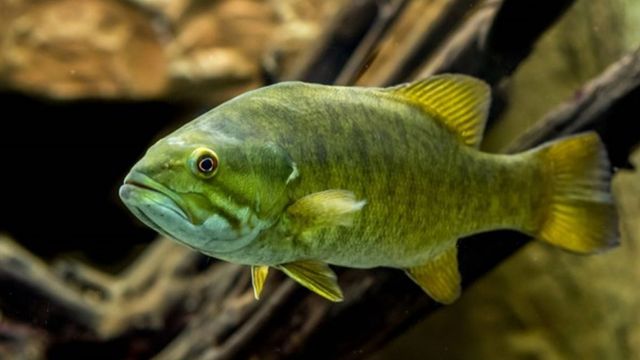
Why Paying CLOSE Attention To Water Clarity Will Catch You More Bass This Season
The ability to see clearly determines how far a bass will chase something down and eat it.
Bass and most other predators rely on sight to hone in on and capture prey. However, unlike terrestrial hunters, bass must compensate for reduced vision to hunt in a shrouded underwater world.
The Lateral Line And How It Works
Bass Fishing And Catching
A bass’s lateral lines help it sense current and its closeness to objects, but the fish doesn’t strike at things with its lateral line. Studies have shown if bass can’t see well in murky water they will figure out how to be able to see.
In murky water then bass rely on a backlighting trick of moving shallower and looking upward to use the surface for background light to outline their target.
A bass’s tendency to adjust its vision to water clarity also influences its strike zone. In clear water, bass can see and chase baits a long distance, but as the water decreases in clarity, so does a bass’ strike zone.
A bass’s eyes are on top of its head and it has binocular vision, so researchers theorize the fish frequently looks for prey either on the same level as its eyes or upward. The fish has to dip down to feed down, which decreases its strike zone. One trick a bass uses to compensate for this sight disadvantage is to remain shallow in dirtier water and look upwards to the light to target prey.
See What I Mean?
In deep clear-water lakes, bass suspending or holding on the bottom pursue bait 20 to 30 feet either in front or above them. Erratic, high-speed retrieves that give bass little time to inspect the lure work best in this long-distance strike zone.
The bass’s chase zone shrinks in stained to murky water as bass move shallower and tend to pursue baits only about 5 feet. Bass can be as deep as 25 feet in trees in stained water but they usually like cover that comes within 8 to 10 feet of the surface. Retrieving a crankbait or spinnerbait at a steady, medium speed works best for these fish in the mid-depth range.
Stay Shallow When It Gets Super Dirty
With reduced visibility, there is no point for bass being more than 4 feet deep in murky water. A bass in muddy water can be less than a foot deep and only moves about 2 feet to track down its dinner. In this short strike zone, you should use big, slow-moving lures that fall slowly to catch muddy water bass.
Updated December 3rd, 2019 at 10:06 AM CT
